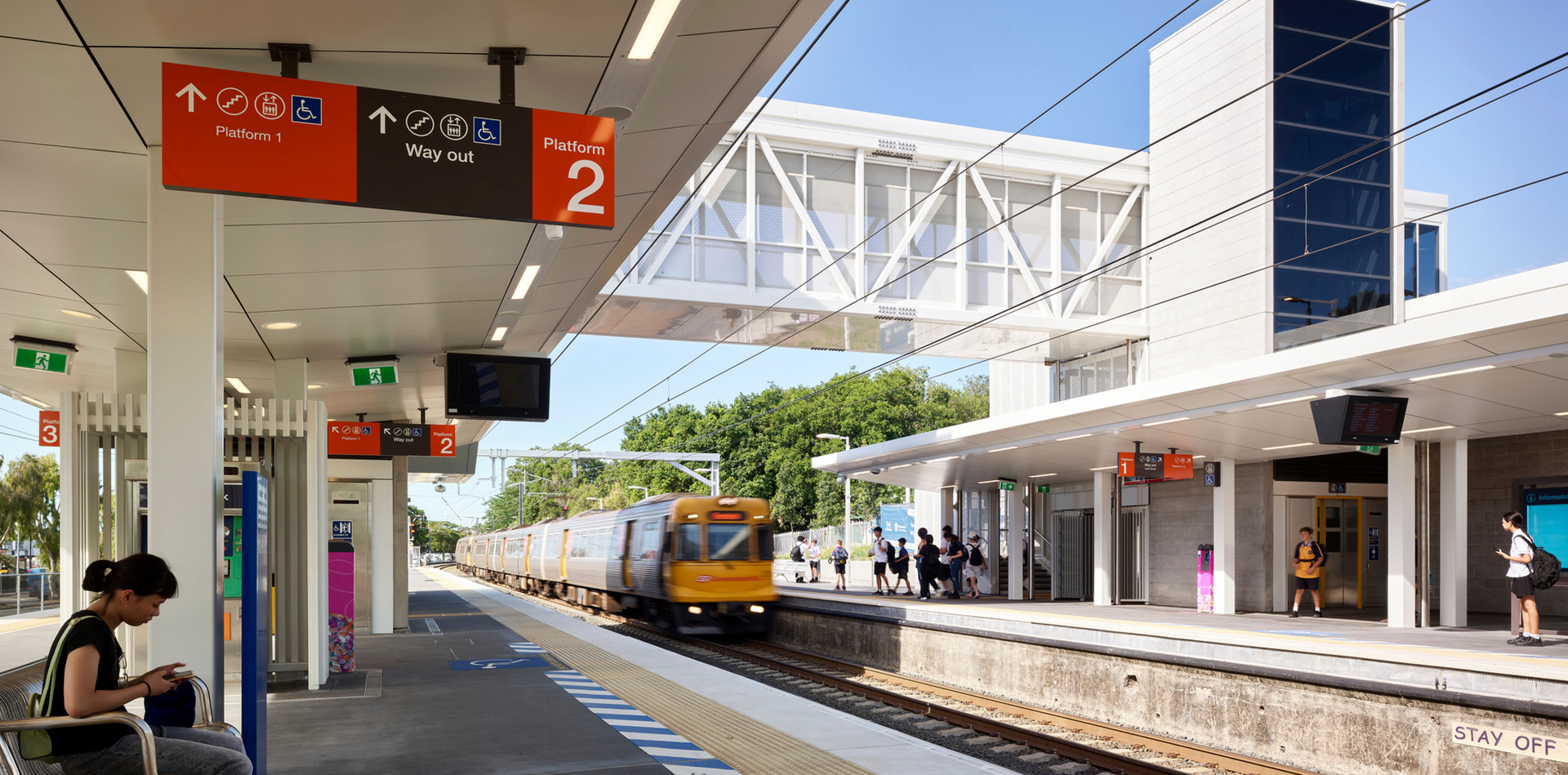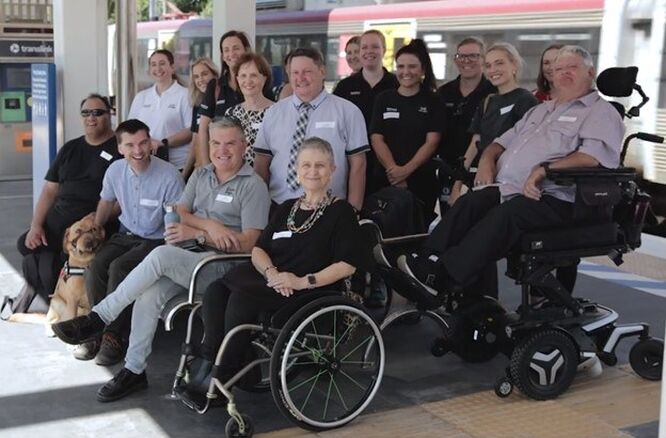High-contrast captioned, Auslan and text versions
To access high contrast captioned, Australian Sign Language (Auslan) translated, and descriptive transcript versions of the video, visit Cross River Rail.

As progress continues on the city-shaping metro that will be ready to welcome local, interstate and international visitors for the Brisbane 2032 Olympics and Paralympics, we take a closer look at the initiatives that will improve the accessibility of Cross River Rail’s stations and future public projects.
Designing for inclusive, dignified, and intuitive urban transport starts with understanding the experience of all who will travel on the rail network, which is why Hassell is working closely with the Cross River Rail Delivery Authority to prioritise engagement with community groups and people with diverse needs.
Lead Architect Tanya Golitschenko was determined to go beyond listening and was instrumental in the co-design process with the community.
— Tanya Golitschenko, Lead Architect and advocate for equity and inclusion


Thirty-one year old David Saxberg, who has been totally blind since he was seven, is a member of the Accessibility Reference Group for the Cross River Rail Delivery Authority. The purpose of an Accessibility Reference Group is to ensure that any accessibility issues are addressed so the whole experience works for everyone.
— David Saxberg, Cross River Rail Accessibility Reference Group member
Initiatives resulting from Accessibility Reference Group insights include raising the complete length of the existing platforms to reduce the step gap from the train to the platform; adding new lifts and stairs to access every platform from street entries; and better access in terms of vehicle parking and drop-off zones across the stations. The technology is also being upgraded to make the stations more accessible, bringing together leading audio visual technology such as implementing hearing loops more extensively across the stations, and including braille maps at the station entries. Importantly, access and safety are improved in tandem with ‘rubber fingers’ being installed at the platform edge to eliminate the gap between platform and trains.
— David Saxberg, Cross River Rail Accessibility Reference Group member
“One feature that I really like and I’ve seen at Yeronga is a platform ‘fill-a-gap’. It’s a nice transition from a platform to the train so no one can fall,” remarks David, who is also a fan of the other accessibility features being implemented across the network. For instance, “tactile maps are really good because you get a great layout of the station and then you can understand it in theory and then go and put it into practise,” notes David.

Cross River Rail’s Senior Manager for Customer and Network Change Cobi Murphy said it is “really important for Cross River Rail to go beyond compliance in the inclusion of accessible features in our stations because the legislation that’s out there is around 20 years old for public transport, and the world has changed since then. We have to make sure that our stations actually reflect the world that we live in now”.
Ultimately, the safety and equity initiatives on Cross River Rail are shaping the best practice for accessible stations — and inclusive public places — in Brisbane and beyond.
— Cobi Murphy, Cross River Rail Senior Manager Customer and Network Change
Watch the video below for more on Cross River Rail’s accessibility initiatives.